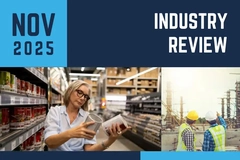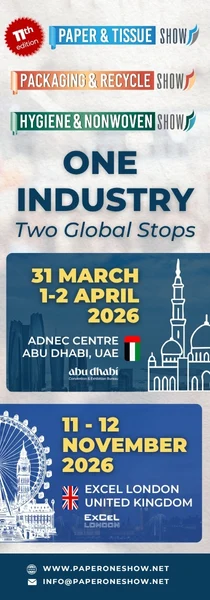
- Industry news
Industry news
- Category news
- Reports
- Key trends
- Multimedia
Multimedia
- Journal
- Events
- Suppliers
Suppliers
- Home
- Industry news
Industry news
- Category news
- Reports
- Key trends
- Multimedia
Multimedia
- Events
- Suppliers
Suppliers
SIG unveils “first” aluminum-free full-barrier material for multiserve aseptic cartons
SIG has launched an “industry first” aluminum-layer-free full-barrier packaging material for multiserve aseptic cartons. The SIG Terra Alu-free + Full barrier material is made of more than 80% paper and, when combined with forest-based polymers, can cut the carbon footprint of SIG’s standard aseptic cartons by up to 61%.
“In our SIG Terra Alu-free + Full barrier packaging material, specific polymer barriers replace aluminum. They block oxygen, aroma, and water vapor,” Stefan Mergel, head of Sustainability and Digital Marketing at SIG, tells Packaging Insights.
“The main challenge was to develop an alternative to the aluminum barrier layer used in our standard aseptic carton packs, that offers comparable protection for oxygen-sensitive products such as fruit juices, nectars, flavored milk, or plant-based beverages.”
According to SIG, the packaging material offers the same full barrier protection and full shelf life of up to 12 months as standard aseptic cartons.
Mergel explains that the SIG Terra Alu-free + Full barrier “builds on the success of this packaging material innovation in the field of single-serve aseptic cartons.” He points out that over 300 million such cartons have been sold in China since 2023.
The company explains that while aluminum makes up only about 5% of a standard aseptic carton by weight, it can contribute up to 25% of the carton’s carbon footprint in a full-barrier package.
Carton system and filling technology
Mergel says that SIG has achieved the scalability of SIG Terra Alu-free + Full barrier by developing “a unique plug-and-play solution that runs seamlessly on installed standard SIG carton filling machines with full performance, including high speed.”
 SIG has scaled up the first, aluminum-layer-free full-barrier pack material for multiserve aseptic cartons.“This is possible due to SIG’s unique sleeve-based aseptic carton system and filling technology. It is the key differentiator that enables us to deliver carton packs made of innovative packaging materials like our SIG Terra solutions to our customers and that enables them to run them via SIG’s globally installed filler base — without our customers having to retrofit or buy new machinery.”
SIG has scaled up the first, aluminum-layer-free full-barrier pack material for multiserve aseptic cartons.“This is possible due to SIG’s unique sleeve-based aseptic carton system and filling technology. It is the key differentiator that enables us to deliver carton packs made of innovative packaging materials like our SIG Terra solutions to our customers and that enables them to run them via SIG’s globally installed filler base — without our customers having to retrofit or buy new machinery.”
The material runs on existing SIG carton filling lines with full performance, including high speed of up to 24,000 packs per hour on SIG filling lines for small-size cartons and up to 15,000 packs per hour on filling lines for multi-serve cartons “with only minor, low-cost adaptations.”
He highlights that the plug-and-play solution enables SIG customers worldwide to make use of the additional environmental benefits that come with the aluminum-layer-free full barrier packaging material without compromising product quality or production performance.
Building on expertise
Discussing how SIG made the Terra Alu-free + Full barrier material possible, Mergel says that “every innovation goes through various stages of development. This is also the case here.”
“SIG is the pioneer in its industry and introduced a packaging material without an aluminum layer for aseptic cartons in 2010: SIG Terra Alu-free – developed for plain liquid dairy products,” he says.
Mergel adds that SIG builds upon its “knowledge and experience with” aluminum-layer-free structures.
“With over 4 billion SIG carton packs featuring no aluminum layer being sold, we have continued to grow our aluminum-layer-free aseptic carton portfolio with an aluminum-layer-free full-barrier solution for small formats, which established itself very successfully.”
“We are drawing on this expertise and will gradually expand this solution to all our flagship formats in the single-serve and multi-serve segment.”
Gavin Steiner, SIG's chief technology officer, adds: “Sustainability is integral to our business, and we strive to create a regenerative food packaging system.”
“Looking ahead, SIG plans to raise the paper content in its aseptic cartons to at least 90% including closures by 2030, with an interim target of 85% without closure this year — further boosting renewability, lowering carbon footprints, and with the potential to streamline the recycling process for aseptic cartons, only requiring the separation of paperboard and polymers.”












